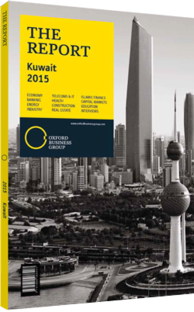Kuwait government makes long-term financial stability a priority
While Kuwait’s banking sector fared well in the wake of the 2007-08 international financial crisis compared to many GCC states, the sector regulators – the Central Bank of Kuwait (CBK) and the Capital Markets Authority (CMA) – have nevertheless worked to shore up the industry to ensure its long-term stability.
Since 2008 the government has introduced a raft of ambitious legislation aimed at instituting best practices in risk management and corporate oversight, with the overarching objective of protecting bank investors, retail customers and corporate clients alike. This effort has largely been successful. As of September 2014 the capital adequacy ratio (CAR) in Kuwait’s banking industry was at 18.3%, according to data from the IMF, up from 15.6% at the end of 2008 and well above the regulated minimum CAR of 12% set by the CBK. The figure reflects both the strengthening of loan books throughout the sector as well as steadily rising revenues at individual institutions. Indeed, according to data from the CBK, total assets at local banks reached KD55.46bn ($191.1bn) by year-end 2014, up from KD51.48bn ($177.4bn) at the close of 2013 and KD47.15bn ($162.4bn) at the end of 2012.
ENSURING STABILITY: The CBK and the government at large have taken a proactive approach towards regulating the banking sector over the past eight years. The government guarantees deposits at all of the country’s banks, and soon after the financial downturn of 2007-08 the Financial Stability Law (FSL) was introduced, which provided government assistance for debt restructuring efforts at local institutions.
In 2010 the government rolled out the Capital Markets Law, which established a new legislative framework for firms listed on the Kuwait Stock Exchange (KSE) – including many of the country’s banks – and a new regulator to enforce the law, the CMA (see Capital Markets chapter). The CBK has also cut interest rates significantly since the downturn, in line with many other monetary authorities around the world. For example, Kuwait’s deposit rate was at 2% by 2013, down from around 5% as of mid-2007, according to data from the World Bank.
More recently, the CBK has focused on mitigating the banking sector’s exposure to a handful of key economic segments, such as real estate and equities. According to the results of the IMF’s 2014 Article IV Consultation, which was completed in September 2014, a combined total of 24% of Kuwaiti banks’ total assets were held in real estate and equities, while another 19% of total banking assets were held in property and equity as collateral. Taking into account the sector’s high CAR, and the relative stability of both the KSE and the property market in recent years, these rates of exposure are considered by the IMF and the CBK to be sufficiently conservative.
LOAN-TO-VALUE RATIO: Nonetheless, in November 2013 the central bank introduced a new minimum loan-to-value ratio for investments in residential real estate by individuals, in what was widely regarded as an effort to further shore up property exposure. In addition to this, the CBK is keeping a close eye on investment activity, lending and the overall positions of Kuwaiti banks, particularly in regard to real estate.
During the economic downturn of 2007-08 a number of investment companies (ICs) were hit hard by a rapid loss of value in the property and equity markets. Limiting the banking sector’s exposure to these firms – a handful of which are still undergoing restructuring – remains a key concern for the CMA. To strengthen the investment industry, the agency is working to encourage a round of mergers and acquisitions among ICs. A number of upcoming laws will contribute to this effort. A draft corporate bankruptcy law, currently being finalised, would allow firms facing financial difficulties a chance to recover, rather than simply shutting down at a complete loss. As and when the law passes in 2015 it will be the first piece of bankruptcy legislation in the Gulf. Further to this, the CMA is currently drafting a new corporate governance code, which the IMF expects to be launched in June 2016.
You have reached the limit of premium articles you can view for free.
Choose from the options below to purchase print or digital editions of our Reports. You can also purchase a website subscription giving you unlimited access to all of our Reports online for 12 months.
If you have already purchased this Report or have a website subscription, please login to continue.

